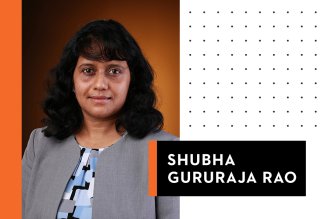
A 2021 cancer study conducted by Ohio Northern University and The Ohio State University professors is calling into question a prevailing treatment mindset regarding heart dysfunction, and could have implications for future cardiac care.
ONU professor Shubha Gururaja Rao, Ph.D., and research associate Sara Seeley, along with their OSU research colleagues, have posited that powerful drugs, particularly chemotherapy, may not be the sole cause of heart dysfunction in cancer patients. Instead, “our results show that systemic cardiac dysfunction occurs due to abnormal cellular overgrowth or cancer elsewhere in the body…” they write. In other words, the cancer itself, rather than the drugs, can begin to harm the heart at the earliest stages of the disease.
“Many cancer patients undergo heart-related complications resulting in high incidences of mortality,” the study’s authors explains. Their findings indicate that such heart conditions may sometimes be influenced by cell abnormalities, or molecules called free radicals.
This study is the first to scrutinize, at the genetic level, the direct link between cancer and cardiac problems.
More research is needed, but if the results of this study are supported by additional findings, they could “facilitate the possible early diagnoses” of heart problems in recently-diagnosed cancer patients, the authors write. Additionally, they encourage healthcare providers to be proactive by considering potential heart issues in patients before they happen.
Dr. Harpreet Singh from OSU, the co-lead author of the study, said findings further support tailor-made cardiac treatments for cancer patients that would target specific problems, such as diastolic dysfunction or an arrhythmia.
Dr. Rao, an assistant professor of pharmacology, says she is excited about the results, and is looking forward to correlation studies that will involve existing data from several cancer patients who have developed heart problems. Patterns would inform or refute the findings from last year’s study, titled “Tumor-Induced Cardiac Dysfunction: A Potential Role of ROS.”
Dr. Rao says she is “really fascinated with the mechanistic part (of disease), at the cellular level.” Her interest in mitochondria and free radicals has influenced her research since her days as a doctoral student, when she focused on examining metabolism bi-products and changes Connecting with OSU researchers to conduct this latest study was therefore a natural fit.
Researchers initially scrutinized data derived from lab mice that had breast cancer but had not been treated with any drugs. They also used fruit flies, which reproduce more quickly and can therefore provide generational cellular mutation information. When fed specific types of antioxidants, flies with eye tumors experienced heart damage reduction, researchers found.
According to Dr. Rao, it was obvious that “something was going on” with the flies. “To my surprise, all had issues,” she says. “There was something going on that was causing the heart to dysfunction even though the tumor was elsewhere.”
The study generated additional questions for future research to address, such as those pertaining to the type of antioxidants that are most effective, antioxidant dosage and which cancer-causing genes were most responsive.
Dr. Rao intends to continue this research on fruit flies. Researchers at OSU are also moving forward with additional work.
“We are actively working with physicians at OSU and other hospitals to identify signaling pathways in cancer patients and correlate them with specific cardiac dysfunctions,” says Dr. Singh. Their results will be further tested in animal models to elucidate signaling pathways and treatment approaches.
Along with Drs. Rao and Singh, co-authors from Ohio State include Priyanka Karekar, Haley N. Jensen, Kathryn L. G. Russart, Devasena Ponnalagu, Shridhar Sanghvi, Sakima A. Smith and Leah M. Pyter.
This research was funded by Commonwealth Universal Enhancement Program grants, the W.W. Smith Charitable Trust, the American Heart Association, the National Institutes of Health, Ohio State’s Davis Heart and Lung Research Institute, and ONU startup funds.